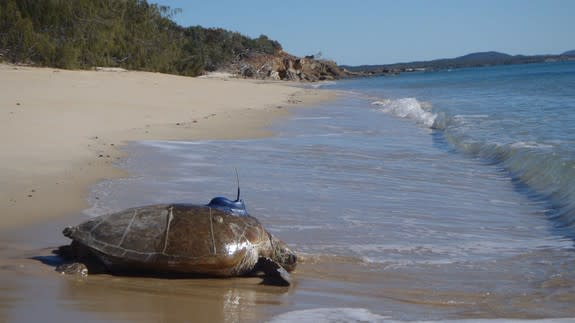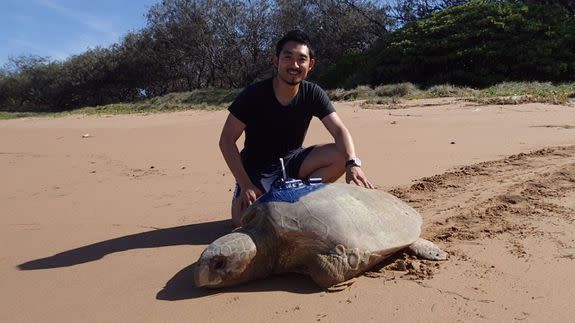Scientists are catching sea turtles 'rodeo style' for an important reason

Turtles have an excellent sense of direction, and how they manage to find their way home time after time has long been a source of fascination for scientists.
While it's believed turtles use the Earth's magnetic fields to navigate when migrating long distances, researchers think sunrises might be a factor in helping them pinpoint their final destination.
SEE ALSO: Arsonist pet tortoise starts fire that burns neighbor's home and causes $150,000 in damage
The findings were published in the Journal of Experimental Marine Biology and Ecology by researcher Takahiro Shimada from James Cook University in Townsville, Australia.
To find out how the turtles found their way home, Shimada and a team caught and tagged 22 sea turtles between 2008 and 2014.

Image: james cook university
They then brought each turtle between 8 to 28 kilometres (4.9 to 17.3 miles) away from their usual home in different sites along Queensland, from Moreton Bay to Torres Strait.
To catch and tag these sea turtles, they used the rather intense sounding "rodeo method" to get the job done.
"On a speed boat, we usually have a skipper and a few jumpers/helpers. Once we spot a turtle, we get close to them and jump on a turtle if the turtle is not moving," Shimada told Mashable.
"But in most cases, turtles would notice us as we approach, so we would chase them as they swim away. We aim to drive the boat parallel to a turtle and once we get to jumping range (let's say about a metre or so), a jumper takes a leap toward the turtle and grabs it on the carapace (shell)."
"Once the turtle is captured, we put the turtle on the speed boat and take it back to base station to get some biological data and samples, and to deploy a satellite tag."
Scientists kept watch on the turtle's travel patterns, and were struck at how the turtles changed their direction when the sunrise hit.
"This is the first time turtles were observed to make directional correction at a particular time of the day," Shimada explained.
But his team however remain cautious about concluding whether the turtles do indeed use the sunrise to orientate themselves.
"It warrants further investigation whether sunrise is the key or turtles use some other cues that occur during the time of sunrise," he said.
